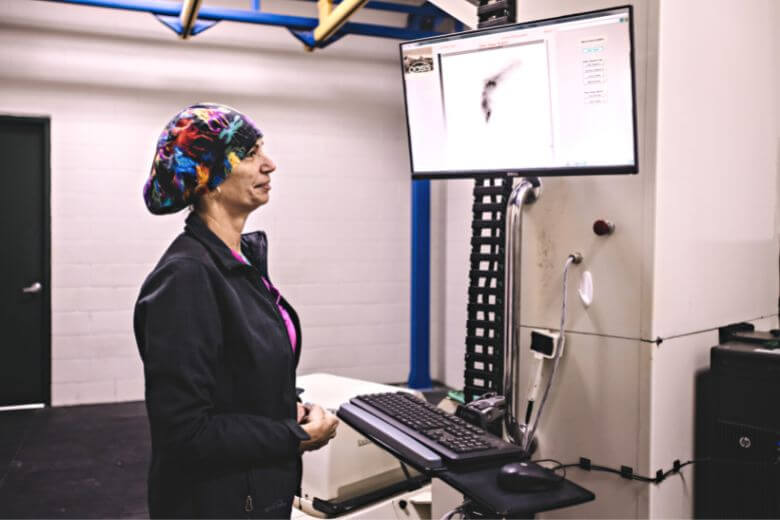Nuclear scintigraphy (bone scan) is a functional imaging technique primarily used to look for regions of increased bone turnover although soft tissue (pool phase) imaging may sometimes be done.
 A small amount of radioactive tracer agent (Technetium-99m-MDP) is injected IV. The tracer emits gamma photons and the horse is scanned with a gamma camera 2 hours later looking for regions of increased uptake of tracer. MDP is a bisphosphonate (like Tildren and Osphos) which binds to bone in regions of increased bone turnover.
A small amount of radioactive tracer agent (Technetium-99m-MDP) is injected IV. The tracer emits gamma photons and the horse is scanned with a gamma camera 2 hours later looking for regions of increased uptake of tracer. MDP is a bisphosphonate (like Tildren and Osphos) which binds to bone in regions of increased bone turnover.
This is a two-dimensional imaging technique but the entire skeleton or selected portions of the skeleton may be scanned. The technique is exquisitely sensitive for detecting regions of increased bone turnover (stress fractures for example), however, it is not very sensitive for detecting soft tissue injuries unless they involve attachments of tendons or ligaments to the bone (for example the suspensory origin). It is important to remember when scheduling a bone scan that it takes time from the onset of an injury for the cellular machinery to be recruited to the site of the injury so the bone scan should not be done until at least 7 days have elapsed since the onset of the lameness.

Nuclear Scintigraphy- a.k.a. “bone scan” is used to diagnose stress fractures and other causes of lameness that may be difficult to diagnose by standard means.
